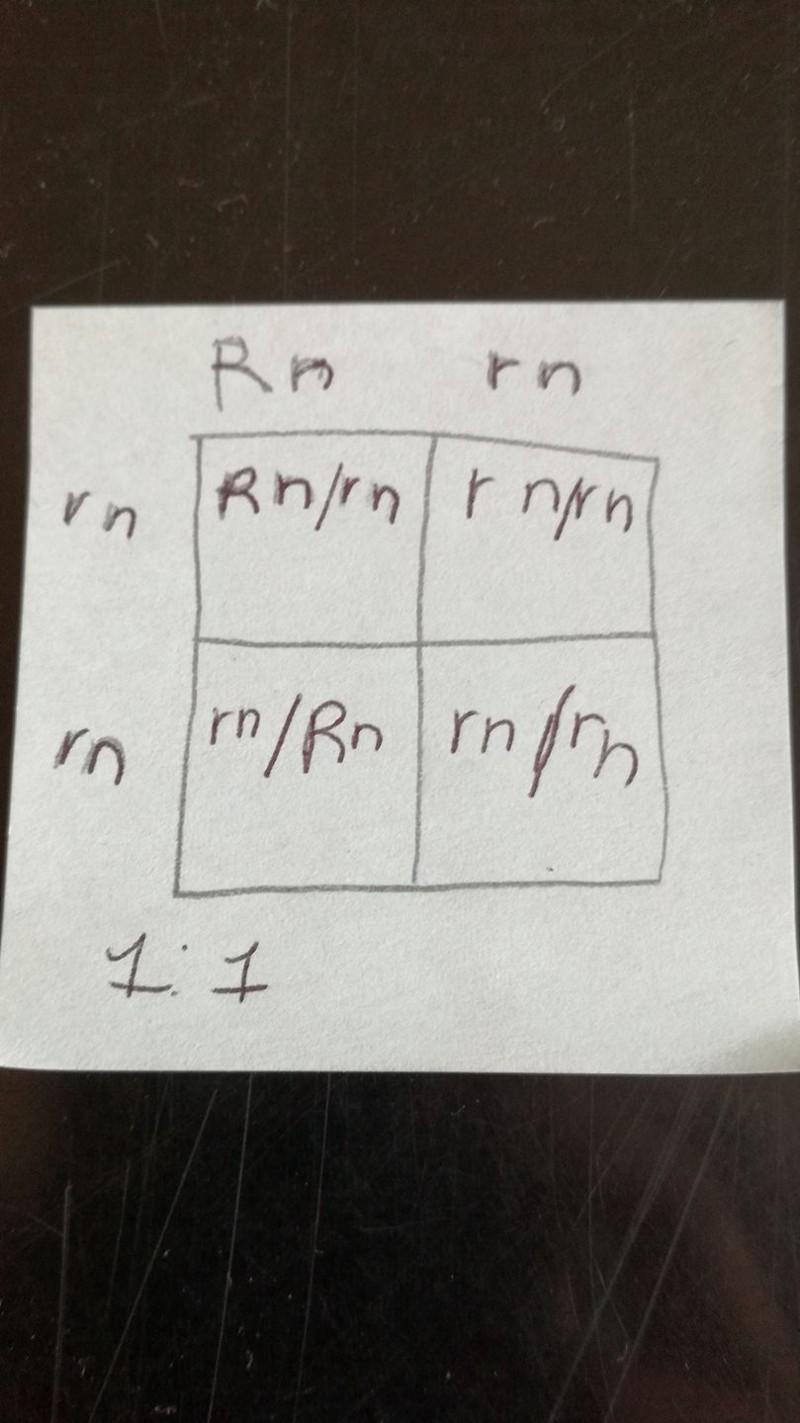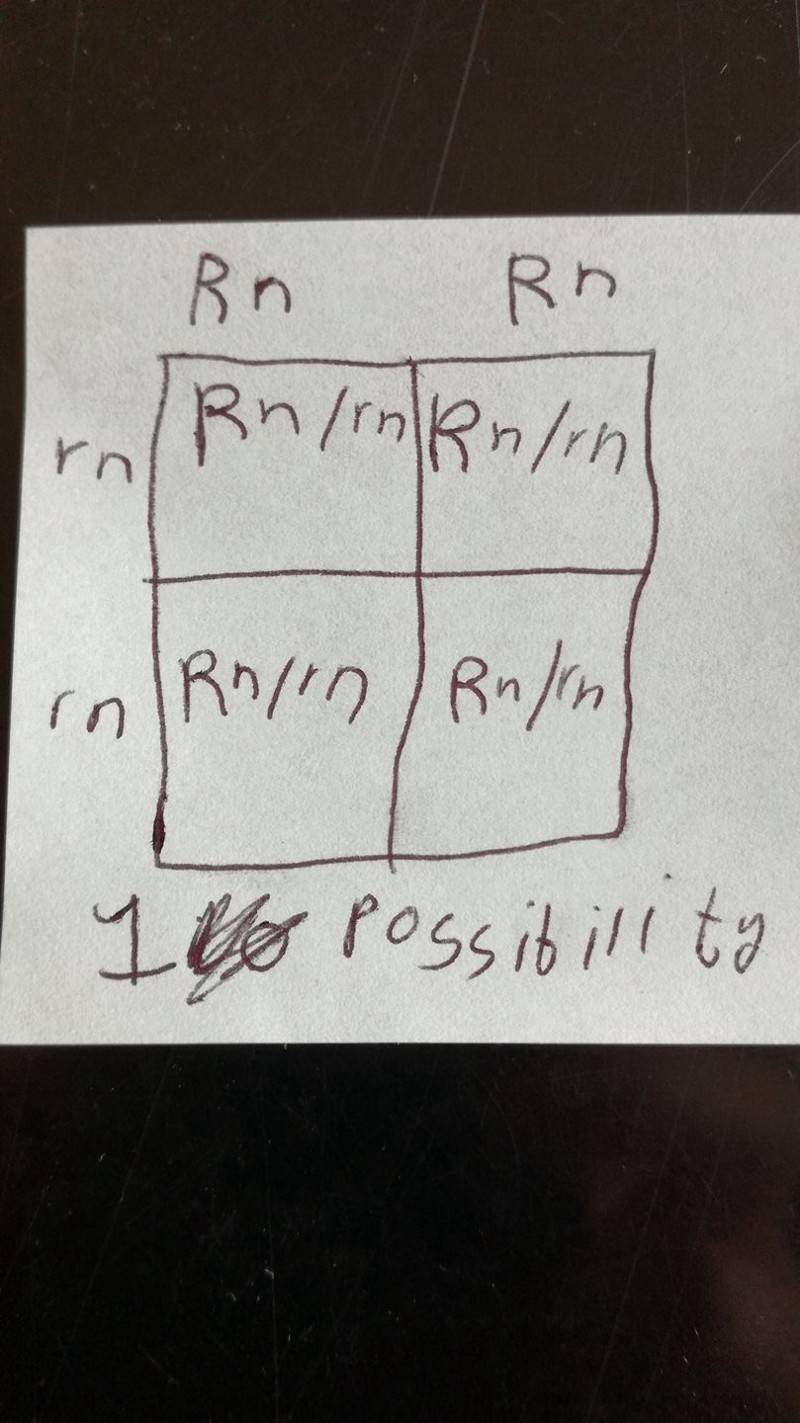
NOTE: I wrote this article a while ago, and have since learned that some of the information I wrote could be incorrect, or incomplete. An update post will be published soon, but until then, this article can be deemed incorrect
We all tend to like a beautiful chestnut horse with white scattered throughout in a common color called roan, don’t we?
What are the odds of producing the strawberry roan mentioned above in a cross of a chestnut and a roan?
Let’s dive in. Please keep in mind that this explanation is only valid when there isn’t any other factors contributing, such as dun or cream. They are many genes that can affect how roan shows up in the phenotype, but chestnut and roan are very simple. Therefore, we assume the horses don’t have any other color affecting genes present, as it gets very complex then.
Let me explain it to you.
Chestnut is controlled by the gene which occupies the ‘extension’ locus. Or you can simply call it the extension gene.
There are two alleles of that gene, the recessive ‘red’ allele (e) or the dominant ‘black’ allele (E).
Therefore, for a horse to have the phenotype (physical appearance) of a chestnut, it must be, genotypically, ee. That’s it. Every solid chestnut out there carries two lowercase ‘e’, or simply put, is ee. No other possibility. Scientifically, there is no such thing as a horse carrying ‘more’ red.
Now, let’s bring roan to the party. The roan gene also has two alleles, the dominant roan allele (Rn) or the recessive non-roan allele (rn).
Now, for a horse to be solid chestnut, it needs to have two of the recessive non roan alleles, therefore, it’s genotype would be ee(for the chestnut) rn/rn(for the non-roan)(the slash between the rn serves only as a separator.) (ee rn/rn)
Keep in mind that we now must list both the traits we’re looking at, since roan and extension are totally different genes.
For a horse to have the roan phenotype, it can be either (Rn/rn) OR (Rn/Rn). This can get a bit confusing, but just keep in mind that only one (Rn) allele is required to have the roan phenotype.
I hope that’s clear now?
Now refer to the punnett square showing the inheritance of the roan gene, only. This one square assumes the roan parent has a genotype of Rn/rn, otherwise called heterozygous roan.

See, both the horses have to be (ee) since they’re both chestnut, even the strawberry roan base coat is chestnut.
So, the foal cannot have any other base coat; it will be chestnut based.
I made two squares, since we don’t know if the roan parent has two roan(Rn) alleles or only one. Below is a square assuming the roan parent has a genotype of Rn/Rn, or otherwise phrased homozygous roan.

Note how all offspring have one Rn allele and one rn?
If it has only one Rn allele, and the other is a rn, there’s a 50% chance of the foal getting the Rn allele, and a 50% chance of getting the rn(non-roan) allele.
The non-roan can only give down the (rn) allele, since she doesn’t have the (Rn) allele to give down, and we know that because otherwise she’d have a roan phenotype.
But, if the roan parent has two Rn alleles, it can only give down the Rn, since it doesn’t have the rn allele.
So in that case, the foal can only inherit (rn) from one parent and (Rn) from the other, therefore resulting in a roan foal always.
Many people thought that the chances of getting a solid chestnut foal from a chestnut x strawberry roan cross was higher than the chance of a roan foal, since chestnut would be the ‘dominating’ color.
While that may be true logically, genetically, it isn’t quite that. Chestnut would, no doubt, be the base coat, but phenotypically the roan will ‘rule’ over the solid chestnut somewhat, resulting in the color called strawberry or red roan. Depending on whether the offspring inherits the Rn allele from it’s parent will determine if the foal will be roan or solid chestnut.
So, if the one roan parent is is homozygous for roan (genotypically, RnRn) the offspring will only be able to inherit the Rn allele from the roan parent. The non roan parent will only give down (rn) since otherwise the phenotype would be a roan.